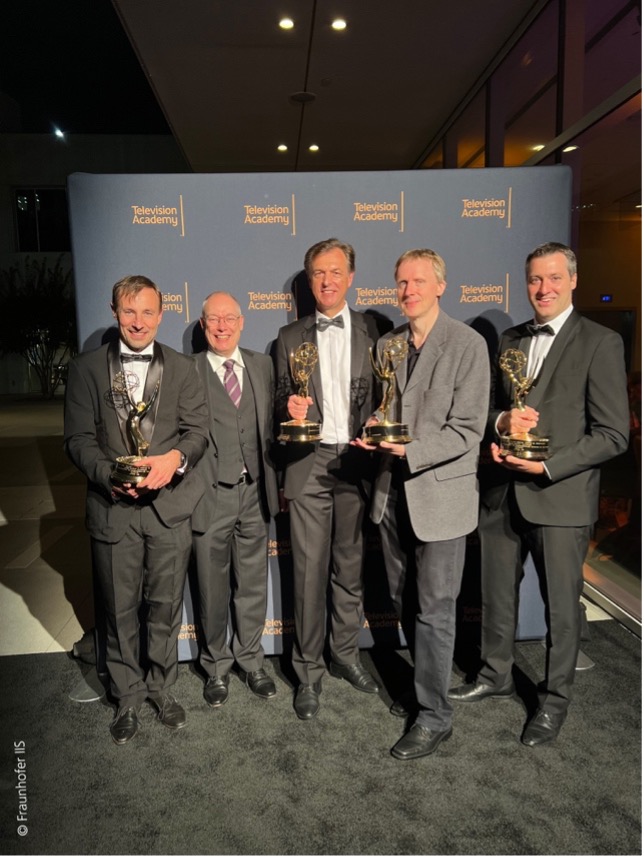Document WG1N101296
JPEG Trust Part 2 on Trust Profiles and Reports reaches Committee Draft stage
The 109th JPEG meeting was held in Nuremberg, Germany, from 12 to 17 October 2025.
This meeting was marked by several major achievements: JPEG Trust Part 2 on Trust Profiles and Reports, complementing Part 1 with several profiles for various usage scenarios, reached Committee Draft; JPEG AIC part 3 was produced for final publication by ISO; JPEG XE reached Committee Draft stage; and the calls for proposals on objective evaluation JPEG AIC-4 and JPEG Pleno Quality Assessment of Light Field received several responses.
Furthermore, the JPEG Committee is pleased to inform that JPEG XS developers Fraunhofer IIS and intoPIX were awarded the Engineering, Science and Technology Emmy® for their contributions to the development of the JPEG XS standard.
The following sections summarise the main highlights of the 109th JPEG meeting.
JPEG Trust
At the 109th JPEG Meeting, the JPEG Committee reached a key milestone with the completion of the Committee Draft (CD) for JPEG Trust Part 2 – Trust Profiles and Reports (ISO/IEC 21617-2). Building on the framework established in Part 1 (Core Foundation), this new specification further refines Trust Profiles and Trust Reports and provides several example profiles and reusable profile snippets for adoption in diverse usage scenarios.
Compared to earlier drafts, the new Trust Profiles specification introduces templates and dynamic metadata blocks, offering enhanced flexibility while maintaining full backwards compatibility for existing profiles. This flexibility is also reflected in the updated Trust Reports, which can now be more easily tailored to specific usage scenarios. This new specification sets the stage for user communities to build their own Trust Profiles and customise them to their specific needs.
In addition to the CD on Part 2, the committee also produced a CD of Part 4 - Reference Software. This specification provides a reference implementation and reference dataset of the Core Foundation. The reference software will be extended with additional implementations in the future.
Finally, the committee also advanced Part 3 – Media Asset Watermarking. The Terms and Definitions and Use Cases and Requirements documents are now publicly available on the JPEG website. The development of Part 3 is progressing on schedule, with the Committee Draft stage targeted for January 2026.
JPEG AIC
The JPEG AIC-3 standard, which specifies a methodology for fine-grained subjective image quality assessment in the range from good quality up to mathematically lossless, was finalised at the 109th JPEG meeting and will be published as International Standard ISO/IEC 29170-3.
In response to the JPEG AIC-4 Call for Proposals on Objective Image Quality Assessment, four proposals were received and presented. A large-scale subjective experiment has been prepared in order to evaluate the proposals.
JPEG XE
JPEG XE is a joint effort between ITU-T SG21 and ISO/IEC JTC1/SC29/WG1 and will become the first internationally endorsed specification by major standardization bodies ITU-T, ISO, and IEC, for coding of events. It aims to establish a robust and interoperable format for efficient representation and coding of events in the context of machine vision and related applications. To expand the reach of JPEG XE, the JPEG Committee has closely coordinated its activities with the MIPI Alliance with the intention of developing a cross-compatible coding mode, allowing MIPI ESP signals to be decoded effectively by JPEG XE decoders.
At the 109th JPEG Meeting, the DIS of JPEG XE Part 1, the core coding system, was prepared. This part specifies the low-complexity and low-latency lossless coding technology that will be the foundation of JPEG XE. Reaching DIS stage is a major milestone and freezes the core coding technology for the first edition of JPEG XE. The JPEG Committee plans to further improve the coding performance and to provide additional lossless and lossy coding modes, scheduled to be developed in 2026. While the DIS of Part 1 is under ballot for approval as an International Standard, the JPEG Committee initiated the work on Part 2 of JPEG XE to define the profiles and levels. A DIS of Part 2 is planned to be ready for ballot in January 2026.
With JPEG XE Part 1 under ballot and Part 2 in the pipeline, the JPEG Committee remains committed to the development of a comprehensive and industry-aligned standard that meets the growing demand for event-based vision technologies. The collaborative approach between multiple standardisation organisations underscores a shared vision for a unified, international standard to accelerate innovation and interoperability in this emerging field.
JPEG XS
The JPEG Committee is extremely proud to announce that the two companies behind the development of JPEG XS, intoPIX and Fraunhofer IIS, were awarded an Emmy® for Engineering, Science, and Technology for their role in the development of the JPEG XS standard. The awards ceremony was held on October 14th, 2025, at the Television Academy’s Saban Media Center in North Hollywood, California. This award recognizes JPEG XS for being a state-of-the-art image compression format that transmits high-quality images with minimal latency and low-resource consumption, with visually near-lossless image quality. It affirms that JPEG XS is the fundamental game changer for real-time transmission of video in live, professional video, and broadcast applications, and that it is being heavily adopted by the industry.
Nevertheless, the work to further improve JPEG XS continues. In this context, the DIS of AMD 1 of JPEG XS Part 1 is currently under ballot at ISO and is expected to be ready by January 2026. This amendment enables the embedding of sub-frame metadata to JPEG XS as required by augmented and virtual reality applications currently discussed within VESA. The JPEG Committee also initiated the steps to start an amendment for Part 2 (Profiles and buffer models) that will define additional sublevels needed to support on-the-fly proxy-level extraction (i.e. lower resolution streams from a master stream) without recompression. The amendment is planned to go to DIS ballot at the next 110th JPEG meeting in Sydney, Australia.

JPEG AI
During the 109th JPEG meeting, the JPEG AI project achieved major milestones, with Part 2 (Profiling), Part 3 (Reference Software), and Part 5 (File Format) approved as International Standards. Meanwhile, Part 4 (Conformance) is proceeding to publication after a positive ballot. The Core Experiments confirmed that JPEG AI outperforms state-of-the-art codecs in compression efficiency and demonstrated a decoder implementation based on the SADL library.
JPEG DNA
During the 109th JPEG meeting, the JPEG Committee designed the wet-lab experiments, including DNA synthesis/sequencing, with results expected by January 2026. The primary objective of the wet-lab experiments is to validate the technical specifications outlined in the current DIS study text of ISO/IEC 25508-1 in the realistic procedures for DNA media storage. Additional efforts are underway as a new Core Experiment to study the performance of the codec-dependent unequal error correction technique, which is expected to result in the future publication of JPEG DNA Part 2 - Profiles and levels.
JPEG Pleno
JPEG Pleno marked a pivotal step toward the forthcoming ISO/IEC 21794-7 standard, Light Field Quality Assessment. The new Part 7 was officially approved for inclusion in the ISO/IEC work programme, confirming international support for standardizing light field quality assessment methodologies. Moreover, in response to the Call for Proposals on Objective Metrics for Light Field Quality Assessment, three proposals were received and presented. In preparation for the evaluation of the proposals submitted in response to the CfP, an evaluation dataset was released and discussed during the meeting. The next milestone is the execution of a Subjective Quality Assessment on the evaluation dataset to evaluate the proposed objective metrics by the 110th JPEG meeting in Sydney. To this end, the methodological design and preparation of the subjective test were discussed and finalized, marking an important step toward developing the standardization framework for objective light field quality assessment.
The JPEG Pleno Workshop on Emerging Coding Technologies for Plenoptic Modalities was conducted at the 109th meeting with presentations from Touradj Ebrahimi (JPEG Convenor), Peter Schelkens (JPEG Plenoptic Coding and Quality Sub-Group Chair), Aljosa Smolic (Hochschule Luzern), Søren Otto Forchhammer (Danmarks Tekniske Universitet), Giuseppe Valenzise (Université Paris-Saclay), Amr Rizk (Leibniz Universität Hannover), Michael Rudolph (Leibniz Universität Hannover), and Irene Viola (Centrum Wiskunde & Informatica).
JPEG RF
At the 109th JPEG Meeting the exploration activity on JPEG Radiance Fields (JPEG RF) continued its progress toward establishing frameworks for coding and quality assessment of radiance fields. The group updated the drafts of the Use Cases and Requirements and Common Test Conditions, alongside the outcomes of an Exploration Study, which examined the impact of camera trajectory design on human perception during a subjective quality assessment. These discussions refined methodological guidelines for trajectory generation and the subjective assessment procedures. Building on this progress, Exploration Study 6 was launched to benchmark the complete assessment framework through a subjective experiment using the developed protocols. Outreach activities were also planned to engage additional stakeholders and support further development ahead of the next 110th JPEG Meeting in Sydney, Australia.
JPEG XL
At the 109th JPEG meeting, work has started on an embedding of JPEG XL in ISOBMFF/HEIF. It will be described in a new edition of ISO/IEC 18181-2, which has been initiated.
"During the 109th JPEG Meeting, the JPEG Committee reached several important milestones. In particular, JPEG Trust continues its development with the addition of new Parts towards the creation of a reliable and effective standard that restores authenticity and provenance of the multimedia information.” said Prof. Touradj Ebrahimi, the Convenor of the JPEG Committee.
About JPEG
The Joint Photographic Experts Group (JPEG) is a Working Group of ISO/IEC, the International Organization for Standardization / International Electrotechnical Commission, (ISO/IEC JTC 1/SC 29/WG 1) and of the International Telecommunication Union (ITU-T SG21), responsible for the popular JPEG, JPEG 2000, JPEG XR, JPSearch, JPEG Systems, JPEG XT and more recently, the JPEG XS, JPEG Pleno, JPEG XL, JPEG AI, JPEG Trust, JPEG DNA and JPEG XE families of imaging standards.
The JPEG Committee nominally meets four times a year. The next 110th JPEG Meeting will be held in Sydney, Australia, from 10 to 16 January 2026. More information about JPEG and its work is available at jpeg.org or by contacting of the JPEG Communication Subgroup. If you would like to stay informed about JPEG activities, please subscribe to the jpeg mailing lists.
Future JPEG meetings are planned as follows:
- No. 110 will be in Sydney, Australia, from 10 to 16 January 2026
- No. 111 will be held online, from 13 to 17 April 2026
- No. 112 will be in Leiria, Portugal, from 5 to 10 July 2026
A zip package containing the official JPEG logo and logos of all JPEG standards can be downloaded here.

